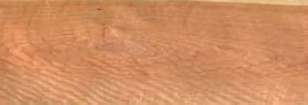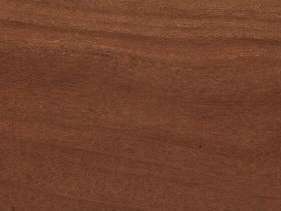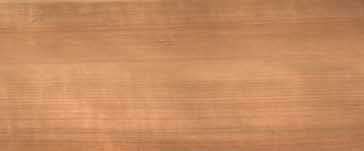     
Black cherry (Prunus serotina)
Family: Rosaceae
Common names: American black cherry, Black cherry, Cabinet cherry, Capollin, Capuli, Capulin, Capulin cherry, Cerezo, Cerezo de Los Andes, Cherry, Chisos wild cherry, Choke cherry, Chokecherry, Detze, Edwards Plateau cherry, Escarpment cherry, Ghoto, Gila chokecherry, Mountain black cherry, Muji, New England mahogany, Pa-kshmuk, Plum, Rum cherry, Southwestern chokecherry, Spate traubenkirsche, Tnunday, Whiskey cherry, Wild black cherry, Wild cherry, Xeugua
Distributed in: Canada, Switzerland, United States (North America, Western Europe)
Distribution overview: In North America, Black cherry is distributed in New Brunswick, Nova Scotia, Ontario, Quebec, Alabama, Arkansas, Arizona, Connecticut, Delaware, Florida, Iowa, Indiana, Kansas, Kentucky, Louisiana, Massachusetts, Maryland, Maine, Michigan, Minnesota, Missouri, Mississippi, North Carolina, Great Smoky Mountain National Park, Illinois, Georgia, North Dakota, Nebraska, New Hampshire, New Jersey, New Mexico, New York, Ohio, Oklahoma, Pennsylvania, Rhode Island, South Carolina, Tennessee, Texas, Virginia, Vermont, Wisconsin, and West Virginia. It sometimes occurs in pure stands, and can thrive, with the exception of very wet or very dry soils, on many sites, including soil without much lime and good drainage. As many as five varieties of Black cherry are known.
Common uses: Bedroom suites, Boat building (general), Boat building, Bobbins, Building materials, Cabinetmaking, Canoes, Carvings, Caskets, Chairs, Chests, Coffins, Concealed parts (Furniture), Core Stock, Decorative veneer, Desks, Dining-room furniture, Dowell pins, Dowells, Drawer sides, Drum sticks, Figured veneer, Fine furniture, Floor lamps, Flooring, Furniture , Furniture components, Furniture squares or stock, Furniture, Handles: general, Hatracks, Interior construction, Interior trim, Joinery, Kitchen cabinets, Lifeboats, Living-room suites, Mathematical instruments, Millwork, Moldings, Musical instruments , Musical instruments, Musical instruments: piano, Novelties, Office furniture, Paneling, Plywood, Scientific instruments, Sculpture, Skis, Specialty items, Toys, Turnery, Veneer, Veneer: decorative, Woodenware
Product sources: States in the United States that lead in the production of cherries in commercial quantities are reported to include Michigan, Washington, Oregon, Utah, California, New York, Pennsylvania, and Idaho. The popularity of cherry in the furniture market has increased over the years because of its warmth, personality, and ease of use. The price of cherry is based on the absence of each of the three basic characteristics of the wood: gum or pockets and streaks, pin knots, and figures. The wood is usually graded by the amount of character it has, and cherry without any figure markings is rather difficult to find. Cherry lumber is slightly more expensive than oak.
Environment profile: Widespread, abundant, and globally secure
Tree size: Trunk diameter is 150-200 cm
Colors: the heart isReddish brown, Yellowand the sapwoodWhitish, Yellow.The grain isWavy, the textureMediumand the lusterRich and satiny
Natural durability: Susceptible to insect attack, Very durable
Odor: No specific smell or taste
LightInduced Color Change: Darker
Kiln Schedules: T8 - B4 (4/4) US
Kiln Drying Rate: Slow
Drying Defects: Splitting, Weighing down stacks reduces warping
Ease of Drying: Slowly
Comments: General finishing qualities are rated as good The use of UV light inhibitors in coatings has been suggested to prevent the color change.
Blunting Effect: Moderate
Boring: Little variation of hole size
Carving: Fairly Easy to Very Easy
Cutting Resistance: Moderate to saw
Gluing: Moderate gluing properties
Mortising: There is a 100% average of excellent
Moulding: Very Good to Excellent
Movement in Service: Very Good to Excellent
Nailing: Pre-Boring Recommended, Very Good to Excellent
Planing: Very Good to Excellent
Resistance to Impregnation: Resistant sapwood
Response to hand tools: Responds Readily
Routing recessing: Fairly Easy to Very Easy
Sanding: Fairly Easy to Very Easy
Veneering qualities: Veneers easily, Veneers moderately easy
Steam bending: Unsuitable
Screwing: Screwing yields good results, Very Good to Excellent Results; Turning: Good results
Painting: Good; Polishing: Very Good to Excellent; Staining: Very Good to Excellent;
- Numerical data Metric
- Numerical data English
- Strength properties
- References
 |
 |
 |
 |
| Item |
Green |
Dry |
Metric |
| Specific Gravity |
0,45 |
0,51 |
|
| Density |
|
544 |
kg/m3 |
| Bending Strength |
535 |
869 |
kg/cm2 |
| Crushing Strength |
28 |
66 |
kg/cm2 |
| Hardness |
|
357 |
kg |
| Impact Strength |
93 |
86 |
cm |
| Shearing Strength |
|
109 |
kg/cm2 |
| Stiffness |
97 |
114 |
1000 kg/cm2 |
| Tangential Shrinkage |
7 |
|
% |
| Radial Shrinkage |
3 |
|
% |
| Weight |
560 |
544 |
kg/m3 |
| Maximum Load |
0,7 |
0,7 |
cm-kg/cm3 |
| Toughness |
|
|
cm-kg |
| Static Bending |
248 |
682 |
kg/cm2 |
|
 |  |  |  | | Item | Green | Dry | English | | Bending Strength | 7612 | 12363 | psi | | Crushing Strength | 402 | 946 | psi | | Density | | 34 | lbs/ft3 | | Hardness | | 788 | lbs | | Impact Strength | 37 | 34 | inches | | Maximum Crushing Strength | 3586 | 7015 | psi | | Shearing Strength | | 1559 | psi | | Static Bending | 3528 | 9702 | psi | | Stiffness | 1383 | 1627 | 1000 psi | | Work to Maximum Load | 10 | 10 | inch-lbs/in3 | | Specific Gravity | 0.45 | 0.51 | | | Weight | 35 | 34 | lbs/ft3 | | Radial Shrinkage | 3 | | % | | Tangential Shrinkage | 7 | | % | | Volumetric Shrinkage | 12 | | % | |
Density (dry weight) = 31-37 lbs/cu. ft.
Max. crushing strength = medium
Hardness (side grain) = soft
Modulus of Elasticity (stiffness) = low
Bending strength (MOR) = low
Toughness-Hammer drop (Impact Strength) = low
Shrinkage, Tangential = moderate
Shrinkage, Radial = small
Density (dry weight) = 38-45 lbs/cu. ft.
Bending strength (MOR) = medium
Work to Maximum Load
Toughness-Hammer drop (Impact Strength) = medium
Max. crushing strength = low
Hardness (side grain) = very soft
Bending strength (MOR) = high
American Black cherry has been described as a wood with many moods, and is usually considered to be in the same class as mahogany for usage in the United States
Bolza, E.,1976,Timber and Health,Div. Building Res. C.S.I.R.O. AustraliaBoone, R.S., C.J. Kozlik, P.J. Bois and E.M. Wengert. 1988. Dry Kiln Schedules for Commercial Woods: Temperate and Tropical. United States Department of Agriculture, Forest Service, Forest Products Laboratory, General Technical Report FPL-GTR-57, Madison, Wisconsin.Brenan, J.P.M., Greenway, P.J.,1949,Check-lists of the Forest Trees and Shrubs of the British Empire,Imperial Forestry Institute, Oxford No.5 Tanganyika Territories Part 2Brown, H.P. and Panshin, A.J.,1940,Commercial Timbers of the United States Their structure, identification,,properties and uses,McGraw-Hill, LondonBrown, W.H.,1978,Timbers of the World: - No.7 North America,TRADACalifornia Department of Forestry.Comparative Physical & Mechanical Properties of Western & Eastern Hardwoods.Prepared by Forest Products Laboratory, University of California at Berkeley, Berkeley, California.n/d.Canadian Forestry Service. 1981.Canadian Woods - Their Properties and Uses. Third Edition. E.J. Mullins and T.S. McKnight, Editors. Published by University of Toronto Press, Toronto, Canada.Clifford, N.,1957,Timber Identification for the Builder and Architect,Leonard Hill (Books) LTD. LondonForest Products Research Laboratory U.K.,1957,A Handbook of Softwoods,Department of Scientific and Industrial Research Forest Products Research,HMSOGatchell, C.J.,1971,American Woods - Black Cherry,USDA, Forest Service American Woods FS-229Gomes Mauro, J., Occhioni, P.,1954,Pulping of Latin-American Woods,U.S.A. Department of Agriculture, Forest Service, Forest Products,Laboratory, Madison Report,2012,964Harrar, E.S.,1942,Some Physical Properties of Modern Cabinet Woods 3. Directional and Volume,Shrinkage,Tropical Woods,9(71, pp26-32Howard, A.L.,1948,A Manual of Timbers of the World.,Macmillan & Co. Ltd. London 3rd ed.I.U.F.R.O.,1973,Veneer Species of the World,Assembled at F.P.L. Madison on behalf of I.U.F.R.O. Working Party on,Slicing and Veneer CuttingJackson, A. and D. Day.1991.Good Wood Handbook - The Woodworker's Guide to Identifying, Selecting and Using the Right Wood.Betterway Publications, Cincinnati, Ohio.Kaiser, J.1992. Wood of the Month -Cherry: The Handsome, Regal Fruitwood. Wood & Wood Products, March, 1992.Page 48.Kaiser, J. 1989. Wood of the Month - Cherry: 'New England Mahogany' is in Style Again.Wood of the Month Annual, Supplement to Wood of the Month, Volume 1, Page 22.Kaiser, J. 1994. Wood of the Month - Cherry: An American Tradition for Fine Furniture. Wood and Wood Products, December, 1994. Page 48.Kline, M. 1977. Prunus serotina - Black cherry. In A Guide to Useful Woods of the World. Flynn Jr., J.H., Editor. King Philip Publishing Co., Portland, Maine. 1994. Page 291-291.Kloot, N.H., Bolza, E.,1961,Properties of Timbers Imported into Australia,C.S.I.R.O. Forest Products Division Technological Paper,No.12Kukachka, B.F.,1962,Characters of Some Imported Woods,U.S.A. Department of Agriculture, Forest Products Laboratory, Madison,,Foreign Wood Series,No.2242Little, E.L.1980.The Audobon Society Field Guide to North American Trees - Western Region.Published by Arthur A. Knopf, New York.Markwardt, L.J., Wilson, T.R.C.,1935,Strength and related properties of woods grown in the United States,U.S.A. Department of Agriculture Technical Bulletin,No.479Mullins, E.J. and McKnight, T.S.,1981,Canadian Woods Their Properties and Uses,University of Toronto Press 3rd EditionNWFA.1994.Wood Species Used in Wood Flooring.Technical Publication No. A200.National Wood Flooring Association, Manchester, MO.Panshin, A.J. and C. deZeeuw. 1980. Textbook of Wood Technology, 4th Edition. McGraw-Hill Series in Forest Resources. McGraw-Hill Book Company, New York.Patterson, D.,1988,Commercial Timbers of the World, 5th Edition,Gower Technical PressRecord, S.J., Hess, R.W.,1943,Timbers of the New World,Yale University PressRendle, B.J. Editor. 1969. World Timbers, Volume Two - North & South America (Including Central America and the West Indies). Published by Ernest Benn Limited, Bouverie House, Fleet Street, London.Rendle, B.J.,1969,World Timbers (3 Vols.,Ernest Benn Ltd. LondonStone, H.,1924,The Timbers of Commerce and their Identification,William Rider & Sons Ltd. LondonTitmuss, F.H.,1965,Commercial Timbers of the World,Technical Press Ltd., London, 3rd editionU.S.D.A. Forest Service,1974,Wood Handbook,U.S.A. Department of Agriculture, Forest Service Handbook,72USDA. 1987. Wood Handbook - Wood as an Engineering Material, Forest Service, Agriculture Handbook No. 72, Forest Products Laboratory, Madison, Wisconsin.USDA. 1988. Dry Kiln Operators Manual, Preliminary Copy. Forest Service, Forest Products Laboratory, Madison, Wisconsin.
|













